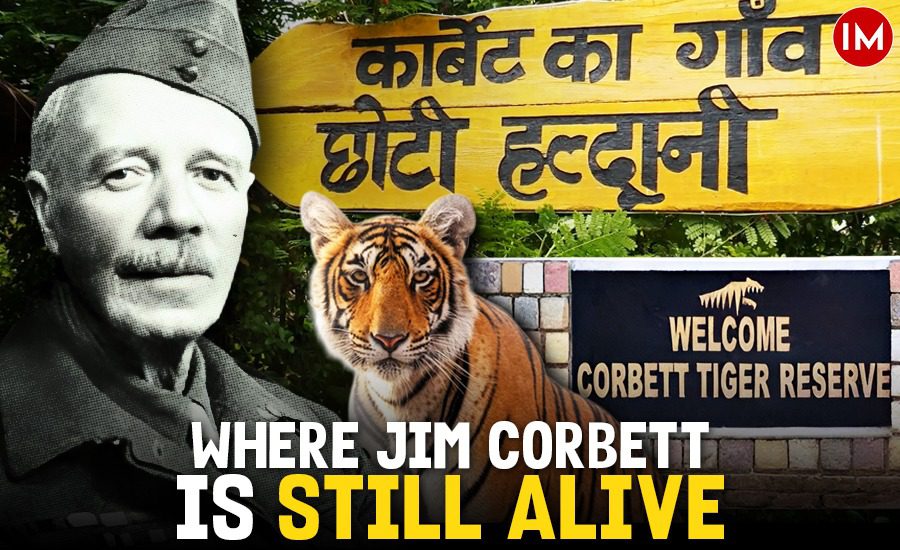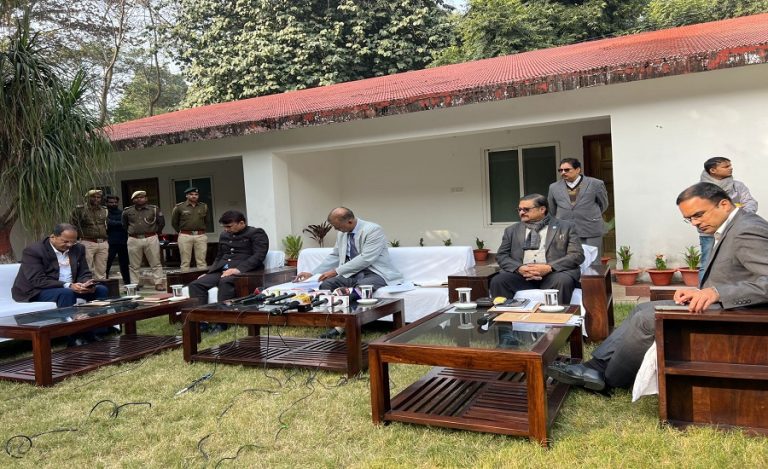Tucked away at the foothills of the Himalayas, where the air still carries the musky scent of sal trees and the distant call of the jungle, lies a sleepy village with a roaring legacy – Chhoti Haldwani, also famously known as “Corbett’s Village”.
Yes, you read that right. This tiny hamlet in Uttarakhand’s Nainital district was once the personal project – and passion – of Edward James ‘Jim’ Corbett, the legendary hunter-turned-conservationist whose name is etched in the annals of Indian wildlife history. And today, Chhoti Haldwani is not just a dot on the map – it’s a living, breathing museum of Corbett’s extraordinary life. Its just 26 Kms from Ram Nagar housing headquarter of Corbett Tiger Reserve (CTR).
Please click on this link to watch the video of Corbett’s village…
WHERE TIME STANDS STILL
Located just about 2 km from Kaladhungi, this quaint village feels like it’s been plucked straight out of a sepia-toned photograph. Cobblestone paths, thatched-roof huts, and forests so close you can hear them breathe – Chhoti Haldwani is where Corbett lived, walked, and dreamed.
In 1915, Corbett bought a 40-acre estate here, not for grandeur but to build a self-sufficient farming village. His goal? To empower local villagers with land, tools, and dignity. He dug wells, built irrigation systems, and even constructed a protective wall around the village to keep wild animals at bay.
And here’s the best part – that wall still stands. So do his bungalow ruins, his beloved pet graveyard, and a forest trail that whispers the secrets of his jungle adventures.
JIM CORBETT LIVES ON… IN EVERY CORNER
You can’t walk a hundred steps in Chhoti Haldwani without stumbling upon a slice of Corbett’s legacy. Villagers still tell tales passed down from their grandparents – of how “Carpet Sahib,” as Corbett was fondly called, would sit by the fire, listen to their fears, and leave in the dead of night to track man-eaters with just his rifle and dog for company.
Locals recall how he never hunted for sport, and always had a soft spot for tigers – even the ones he had to kill. “He killed only to save lives and cried for the beasts he had to shoot,” says 80-year-old Kundan Singh, whose grandfather worked on Corbett’s land.
THE ECO-TRAIL & HERITAGE WALK
Thanks to the Uttarakhand Forest Department and local conservationists, Chhoti Haldwani is slowly but steadily reclaiming its place on the eco-tourism map.
A guided heritage walk now takes you through: Corbett’s restored bungalow (now a museum), The village wall built to deter wild animals, traditional Kumauni homes he helped design And the very forest trail Corbett took on his man-eater missions.
Nature walks, bird watching, and even storytelling evenings are drawing a new wave of conscious travellers, wildlife lovers, and history buffs.
VILLAGE LIFE WITH A WILD TWIST
Chhoti Haldwani isn’t just about the past — it’s also about sustainable living in the shadow of the wild. The villagers continue farming using traditional techniques passed down from Corbett’s time. Many have now become nature guides, homestay hosts, and forest interpreters, giving the village a whole new economic lifeline.
What’s remarkable is how deeply Jim Corbett is still woven into the local identity. His teachings on coexisting with wildlife, his respect for native cultures, and his love for the land remain guiding principles here.
FINAL ROAR
Jim Corbett may have passed away in distant Kenya, but his spirit prowls gently through the fields and forests of Chhoti Haldwani. It’s a village that not only birthed a conservation movement but also stands as a quiet reminder of what one man with a heart full of courage — and compassion — can do for nature.
So if you’re ever in the Kumaon region, ditch the crowded tiger safaris for a day and take a detour to Chhoti Haldwani. The tigers may be gone, but the tales still roam free.






























